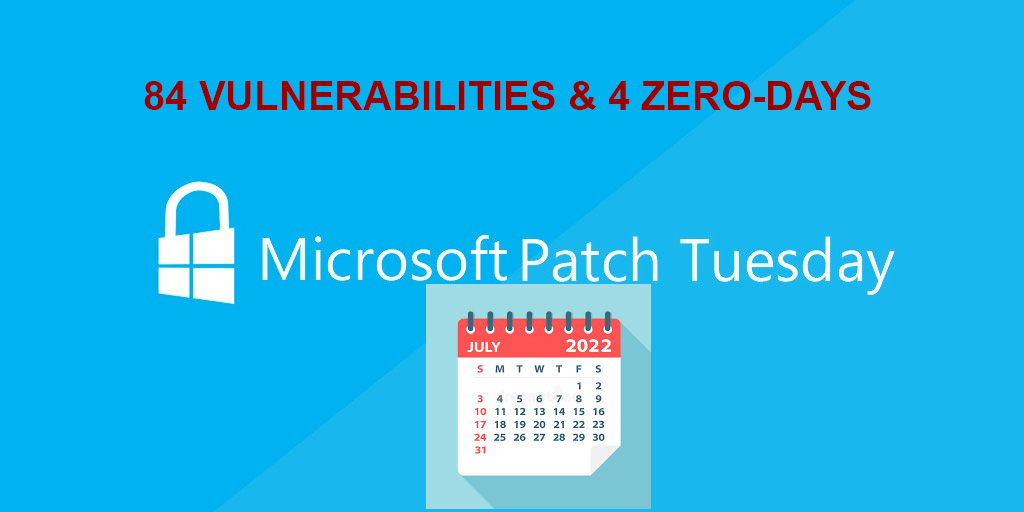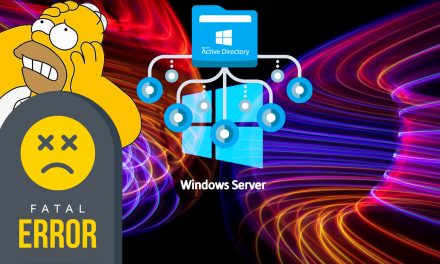- 52 Vulnérabilités d’élévation des privilèges
- 4 Vulnérabilités de contournement des fonctionnalités de sécurité
- 12 Vulnérabilités d’exécution de code à distance
- 11 Vulnérabilités de divulgation d’informations
- 5 Vulnérabilités de déni de service
A vos mises à jour !!!
Microsoft classe une vulnérabilité comme zero-day si elle est divulguée publiquement ou activement exploitée sans qu’aucun correctif officiel ne soit disponible
Microsoft Graphics Component
La vulnérabilité la plus critique de ce mois-ci et corrigé e est une exécution de code à distance dans le composant Windows Graphic. CVE-2022-30221
Celle-ci a obtenue une note CVSS de 8,8.
Microsoft indique que l’exploitation est moins probable et que pour exploiter la vulnérabilité, l’attaquant devrait convaincre l’utilisateur de se connecter à un serveur RDP malveillant.
La vulnérabilité zero-day activement exploitée et corrigée aujourd’hui porte le nom de “CVE-2022-22047 – Windows CSRSS Elevation of Privilege Vulnerability“.
Un attaquant qui parviendrait à exploiter cette vulnérabilité pourrait obtenir les privilèges SYSTEM”
Cette vulnérabilité a été découverte en interne par Microsoft Threat Intelligence Center (MSTIC) et Microsoft Security Response Center (MSRC).
Plusieurs produits SQL Server arrivent en fin de Vie EOL
Aujourd’hui marque la fin de vie de plusieurs versions de SQL Server . SQL Server 2012 sera officiellement en fin de vie aujourd’hui, à moins que vous ne disposiez des mises à jour de sécurité étendues. Pour SQL Server 2008 et SQL Server 2008 R2, les mises à jour de sécurité étendues se terminent aujourd’hui, sauf si vous utilisez la version Azure pour laquelle une année supplémentaire de mise à jour de sécurité étendue est disponible.
Système de fichiers réseau
La série de vulnérabilités NFS se poursuit avec CVE-2022-22029, une exécution de code à distance avec un score CVSS de 8,1. Comme pour les vulnérabilités RCE précédentes, un attaquant doit créer un appel non authentifié et spécialement conçu vers un service NFS pour déclencher un RCE.
Retrouvez L’ensemble de la liste des CVE
| CVE ID | LABEL | CVE Description | Severity |
| CVE-2022-30221 | Microsoft Graphics Component | Windows Graphics Component Remote Code Execution Vulnerability | CRITICAL |
| CVE-2022-22029 | Windows Network File System | Windows Network File System Remote Code Execution Vulnerability | CRITICAL |
| CVE-2022-22039 | Windows Network File System | Windows Network File System Remote Code Execution Vulnerability | CRITICAL |
| CVE-2022-22038 | Windows Remote Procedure Call Runtime | Remote Procedure Call Runtime Remote Code Execution Vulnerability | CRITICAL |
| CVE-2022-23825 | AMD CPU Branch | AMD: CVE-2022-23825 AMD CPU Branch Type Confusion | Important |
| CVE-2022-23816 | AMD CPU Branch | AMD: CVE-2022-23816 AMD CPU Branch Type Confusion | Important |
| CVE-2022-33665 | Azure Site Recovery | Azure Site Recovery Elevation of Privilege Vulnerability | Important |
| CVE-2022-33666 | Azure Site Recovery | Azure Site Recovery Elevation of Privilege Vulnerability | Important |
| CVE-2022-33663 | Azure Site Recovery | Azure Site Recovery Elevation of Privilege Vulnerability | Important |
| CVE-2022-33664 | Azure Site Recovery | Azure Site Recovery Elevation of Privilege Vulnerability | Important |
| CVE-2022-33667 | Azure Site Recovery | Azure Site Recovery Elevation of Privilege Vulnerability | Important |
| CVE-2022-33672 | Azure Site Recovery | Azure Site Recovery Elevation of Privilege Vulnerability | Important |
| CVE-2022-33673 | Azure Site Recovery | Azure Site Recovery Elevation of Privilege Vulnerability | Important |
| CVE-2022-33671 | Azure Site Recovery | Azure Site Recovery Elevation of Privilege Vulnerability | Important |
| CVE-2022-33668 | Azure Site Recovery | Azure Site Recovery Elevation of Privilege Vulnerability | Important |
| CVE-2022-33661 | Azure Site Recovery | Azure Site Recovery Elevation of Privilege Vulnerability | Important |
| CVE-2022-33662 | Azure Site Recovery | Azure Site Recovery Elevation of Privilege Vulnerability | Important |
| CVE-2022-33657 | Azure Site Recovery | Azure Site Recovery Elevation of Privilege Vulnerability | Important |
| CVE-2022-33656 | Azure Site Recovery | Azure Site Recovery Elevation of Privilege Vulnerability | Important |
| CVE-2022-33658 | Azure Site Recovery | Azure Site Recovery Elevation of Privilege Vulnerability | Important |
| CVE-2022-33660 | Azure Site Recovery | Azure Site Recovery Elevation of Privilege Vulnerability | Important |
| CVE-2022-33659 | Azure Site Recovery | Azure Site Recovery Elevation of Privilege Vulnerability | Important |
| CVE-2022-33655 | Azure Site Recovery | Azure Site Recovery Elevation of Privilege Vulnerability | Important |
| CVE-2022-33651 | Azure Site Recovery | Azure Site Recovery Elevation of Privilege Vulnerability | Important |
| CVE-2022-33650 | Azure Site Recovery | Azure Site Recovery Elevation of Privilege Vulnerability | Important |
| CVE-2022-33652 | Azure Site Recovery | Azure Site Recovery Elevation of Privilege Vulnerability | Important |
| CVE-2022-33654 | Azure Site Recovery | Azure Site Recovery Elevation of Privilege Vulnerability | Important |
| CVE-2022-33653 | Azure Site Recovery | Azure Site Recovery Elevation of Privilege Vulnerability | Important |
| CVE-2022-33669 | Azure Site Recovery | Azure Site Recovery Elevation of Privilege Vulnerability | Important |
| CVE-2022-33643 | Azure Site Recovery | Azure Site Recovery Elevation of Privilege Vulnerability | Important |
| CVE-2022-30181 | Azure Site Recovery | Azure Site Recovery Elevation of Privilege Vulnerability | Important |
| CVE-2022-33676 | Azure Site Recovery | Azure Site Recovery Remote Code Execution Vulnerability | Important |
| CVE-2022-33677 | Azure Site Recovery | Azure Site Recovery Elevation of Privilege Vulnerability | Important |
| CVE-2022-33678 | Azure Site Recovery | Azure Site Recovery Remote Code Execution Vulnerability | Important |
| CVE-2022-33642 | Azure Site Recovery | Azure Site Recovery Elevation of Privilege Vulnerability | Important |
| CVE-2022-33674 | Azure Site Recovery | Azure Site Recovery Elevation of Privilege Vulnerability | Important |
| CVE-2022-33675 | Azure Site Recovery | Azure Site Recovery Elevation of Privilege Vulnerability | Important |
| CVE-2022-33641 | Azure Site Recovery | Azure Site Recovery Elevation of Privilege Vulnerability | Important |
| CVE-2022-30187 | Azure Storage Library | Azure Storage Library Information Disclosure Vulnerability | Important |
| CVE-2022-33637 | Microsoft Defender for Endpoint | Microsoft Defender for Endpoint Tampering Vulnerability | Important |
| CVE-2022-22034 | Microsoft Graphics Component | Windows Graphics Component Elevation of Privilege Vulnerability | Important |
| CVE-2022-30213 | Microsoft Graphics Component | Windows GDI+ Information Disclosure Vulnerability | Important |
| CVE-2022-33632 | Microsoft Office | Microsoft Office Security Feature Bypass Vulnerability | Important |
| CVE-2022-27776 | Open Source Software | HackerOne: CVE-2022-27776 Insufficiently protected credentials vulnerability might leak authentication or cookie header data | Important |
| CVE-2022-30214 | Role: DNS Server | Windows DNS Server Remote Code Execution Vulnerability | Important |
| CVE-2022-22024 | Role: Windows Fax Service | Windows Fax Service Remote Code Execution Vulnerability | Important |
| CVE-2022-22027 | Role: Windows Fax Service | Windows Fax Service Remote Code Execution Vulnerability | Important |
| CVE-2022-30223 | Role: Windows Hyper-V | Windows Hyper-V Information Disclosure Vulnerability | Important |
| CVE-2022-22042 | Role: Windows Hyper-V | Windows Hyper-V Information Disclosure Vulnerability | Important |
| CVE-2022-33633 | Skype for Business and Microsoft Lync | Skype for Business and Lync Remote Code Execution Vulnerability | Important |
| CVE-2022-30215 | Windows Active Directory | Active Directory Federation Services Elevation of Privilege Vulnerability | Important |
| CVE-2022-30202 | Windows Advanced Local Procedure Call | Windows Advanced Local Procedure Call Elevation of Privilege Vulnerability | Important |
| CVE-2022-30224 | Windows Advanced Local Procedure Call | Windows Advanced Local Procedure Call Elevation of Privilege Vulnerability | Important |
| CVE-2022-22037 | Windows Advanced Local Procedure Call | Windows Advanced Local Procedure Call Elevation of Privilege Vulnerability | Important |
| CVE-2022-22711 | Windows BitLocker | Windows BitLocker Information Disclosure Vulnerability | Important |
| CVE-2022-22048 | Windows BitLocker | BitLocker Security Feature Bypass Vulnerability | Important |
| CVE-2022-30203 | Windows Boot Manager | Windows Boot Manager Security Feature Bypass Vulnerability | Important |
| CVE-2022-22026 | Windows Client/Server Runtime Subsystem | Windows CSRSS Elevation of Privilege Vulnerability | Important |
| CVE-2022-22049 | Windows Client/Server Runtime Subsystem | Windows CSRSS Elevation of Privilege Vulnerability | Important |
| CVE-2022-22047 | Windows Client/Server Runtime Subsystem | Windows CSRSS Elevation of Privilege Vulnerability | Important |
| CVE-2022-30212 | Windows Connected Devices Platform Service | Windows Connected Devices Platform Service Information Disclosure Vulnerability | Important |
| CVE-2022-22031 | Windows Credential Guard | Windows Credential Guard Domain-joined Public Key Elevation of Privilege Vulnerability | Important |
| CVE-2022-22043 | Windows Fast FAT Driver | Windows Fast FAT File System Driver Elevation of Privilege Vulnerability | Important |
| CVE-2022-22050 | Windows Fax and Scan Service | Windows Fax Service Elevation of Privilege Vulnerability | Important |
| CVE-2022-30205 | Windows Group Policy | Windows Group Policy Elevation of Privilege Vulnerability | Important |
| CVE-2022-30209 | Windows IIS | Windows IIS Server Elevation of Privilege Vulnerability | Important |
| CVE-2022-22025 | Windows IIS | Windows Internet Information Services Cachuri Module Denial of Service Vulnerability | Important |
| CVE-2022-22040 | Windows IIS | Internet Information Services Dynamic Compression Module Denial of Service Vulnerability | Important |
| CVE-2022-21845 | Windows Kernel | Windows Kernel Information Disclosure Vulnerability | Important |
| CVE-2022-22045 | Windows Media | Windows.Devices.Picker.dll Elevation of Privilege Vulnerability | Important |
| CVE-2022-30225 | Windows Media | Windows Media Player Network Sharing Service Elevation of Privilege Vulnerability | Important |
| CVE-2022-22028 | Windows Network File System | Windows Network File System Information Disclosure Vulnerability | Important |
| CVE-2022-22036 | Windows Performance Counters | Performance Counters for Windows Elevation of Privilege Vulnerability | Important |
| CVE-2022-30211 | Windows Point-to-Point Tunneling Protocol | Windows Layer 2 Tunneling Protocol (L2TP) Remote Code Execution Vulnerability | Important |
| CVE-2022-22023 | Windows Portable Device Enumerator Service | Windows Portable Device Enumerator Service Security Feature Bypass Vulnerability | Important |
| CVE-2022-30206 | Windows Print Spooler Components | Windows Print Spooler Elevation of Privilege Vulnerability | Important |
| CVE-2022-30226 | Windows Print Spooler Components | Windows Print Spooler Elevation of Privilege Vulnerability | Important |
| CVE-2022-22022 | Windows Print Spooler Components | Windows Print Spooler Elevation of Privilege Vulnerability | Important |
| CVE-2022-22041 | Windows Print Spooler Components | Windows Print Spooler Elevation of Privilege Vulnerability | Important |
| CVE-2022-30208 | Windows Security Account Manager | Windows Security Account Manager (SAM) Denial of Service Vulnerability | Important |
| CVE-2022-30216 | Windows Server Service | Windows Server Service Tampering Vulnerability | Important |
| CVE-2022-30222 | Windows Shell | Windows Shell Remote Code Execution Vulnerability | Important |
| CVE-2022-30220 | Windows Storage | Windows Common Log File System Driver Elevation of Privilege Vulnerability | Important |
| CVE-2022-33644 | XBox | Xbox Live Save Service Elevation of Privilege Vulnerability | Important |
| CVE-2022-2295 | Microsoft Edge (Chromium-based) | Chromium: CVE-2022-2295 Type Confusion in V8 | Unknown |
| CVE-2022-2294 | Microsoft Edge (Chromium-based) | Chromium: CVE-2022-2294 Heap buffer overflow in WebRTC | Unknown |





